▼ Aerial View

▼ Location
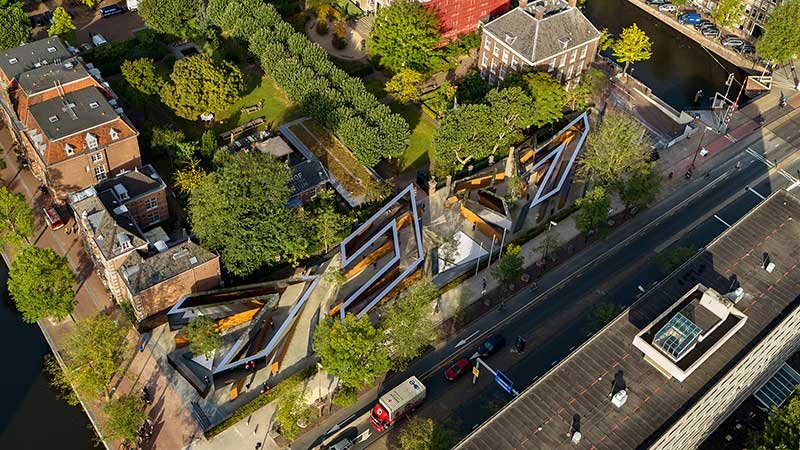
The 1,700 square meter memorial incorporates four volumes that represent the letters in the Hebrew word רכזל meaning “In Memory of”. The volumes are arranged in a rectilinear configuration on the north-south axis of the main thoroughfare Weesperstraat and the Hoftuin pavilion to the West.
▼ Sketch

As visitors enter the memorial they will encounter passages articulated by two meter high brick walls carrying the message of remembrance. Each of the four volumes is crafted from mirror finished stainless steel that hovers above the walls of individually stacked bricks. 102,000 bricks will be inscribed with the first and last name, along with their age and birthday, giving a tangible quantification to the many casualties, as well leaving 1000 blank bricks that will memorialize the unknown victims.
▼ The Project And Surroundings
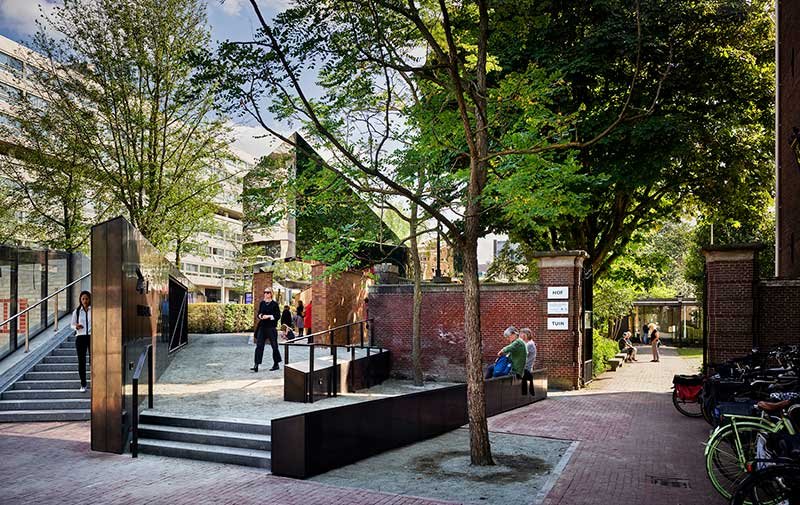
▼ External View
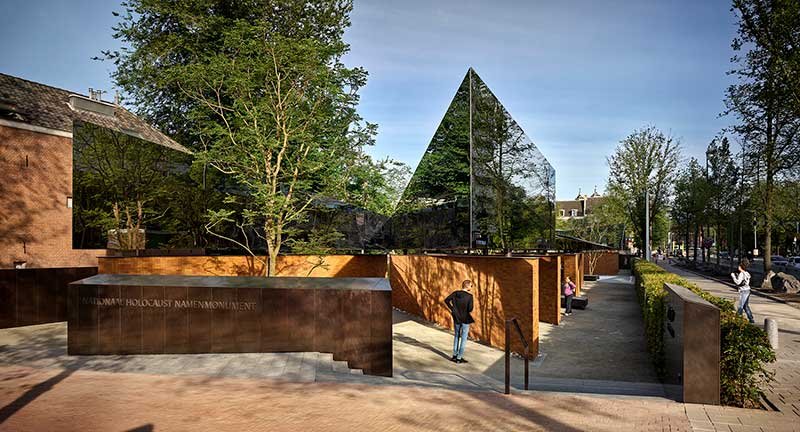
▼ Entrance
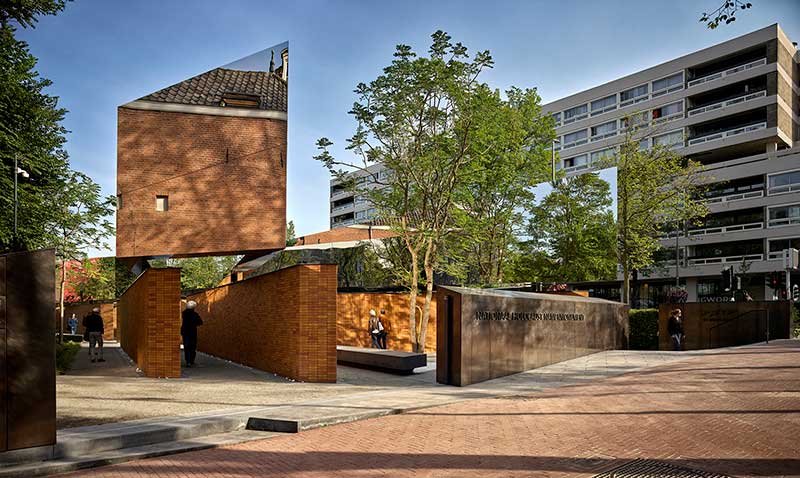
▼ Suspended Mirror Stainless Steel Structure
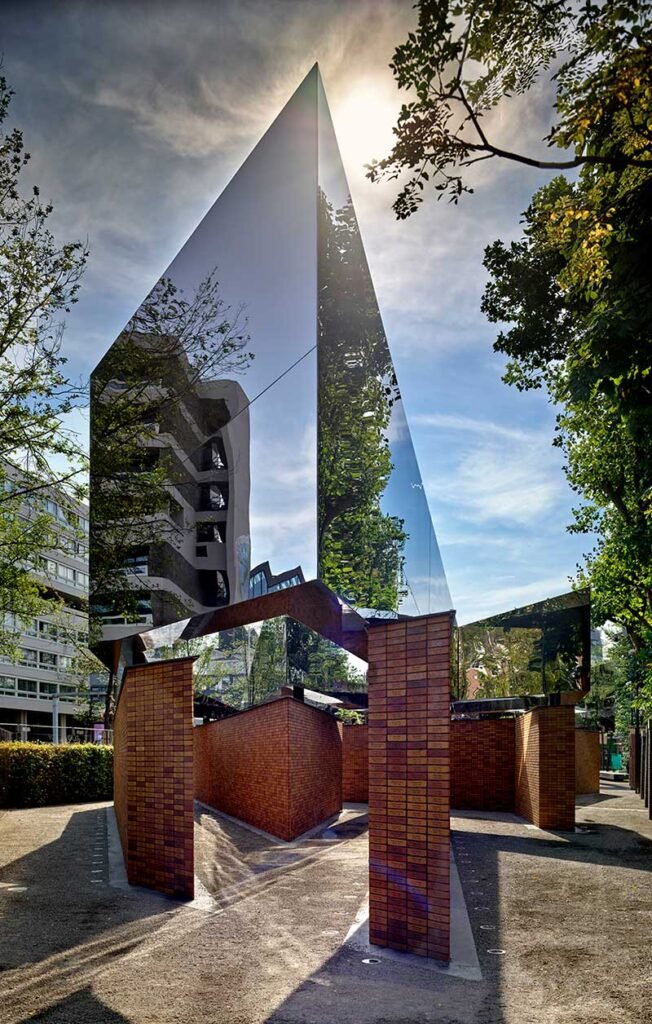
The Dutch lost the largest percentage of their Jewish population during the Holocaust. The National Holocaust Memorial of Names is the first Holocaust memorial to commemorate the Dutch victims and the first of its kind in Amsterdam,” said architect Daniel Libeskind. “My personal connection as a child of Holocaust survivors has made it increasingly important to be a part of this significant project. I hope it will become a place for contemplation, hope, and an important reminder to fight hate in all its forms for the people of the Netherlands and beyond,” said Libeskind.
▼ Inside View: Place For Contemplation And Hope
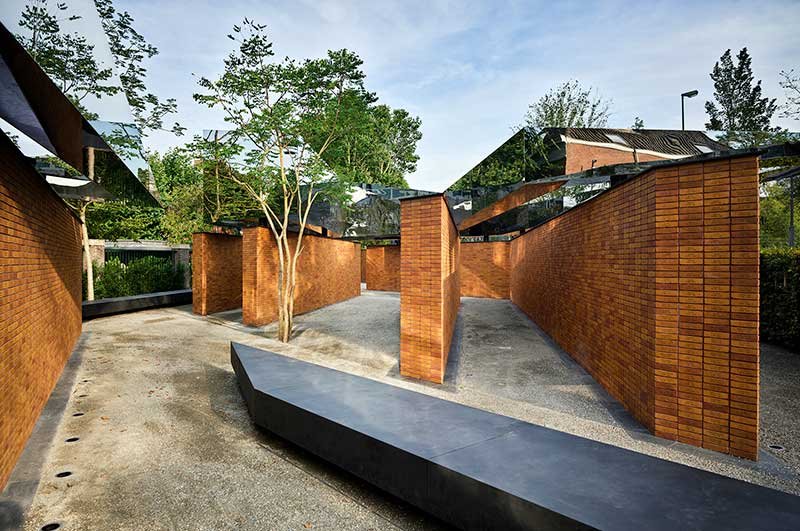
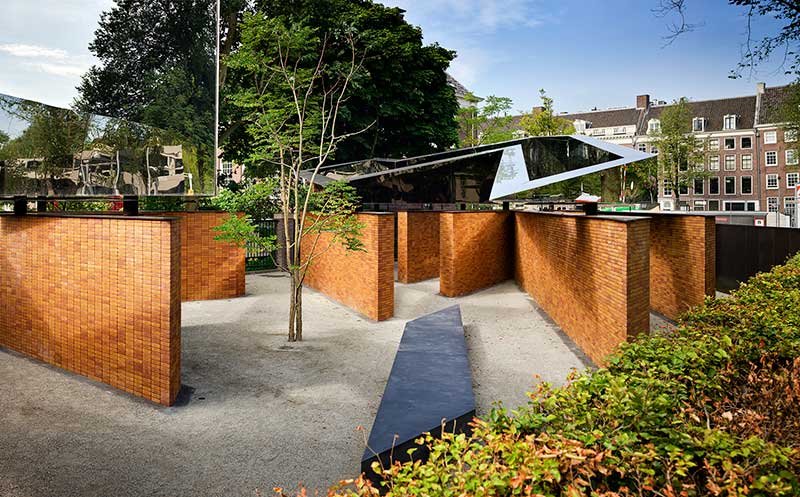
The materiality of the brick a ubiquitous material in The Netherlands and throughout the cities of Western Europe, paired with the highly reflective and geometric forms of steel letters, which reference the connection between the Dutch past and present. At the intersection of the brick and metallic forms is a narrow void that creates the illusion that the steel letters are hovering above and represents an interruption in the history and culture of the Dutch people. This suspended emptiness, or ‘Breath of Air’, detaches the neighborhood from a future in which Dutch Jewish families go missing. The memorial will have an interactive element that will allow visitors to place stones by the names on the bricks, similar to the way one honors the dead at a grave.
▼ Combination Of Brick And Metal
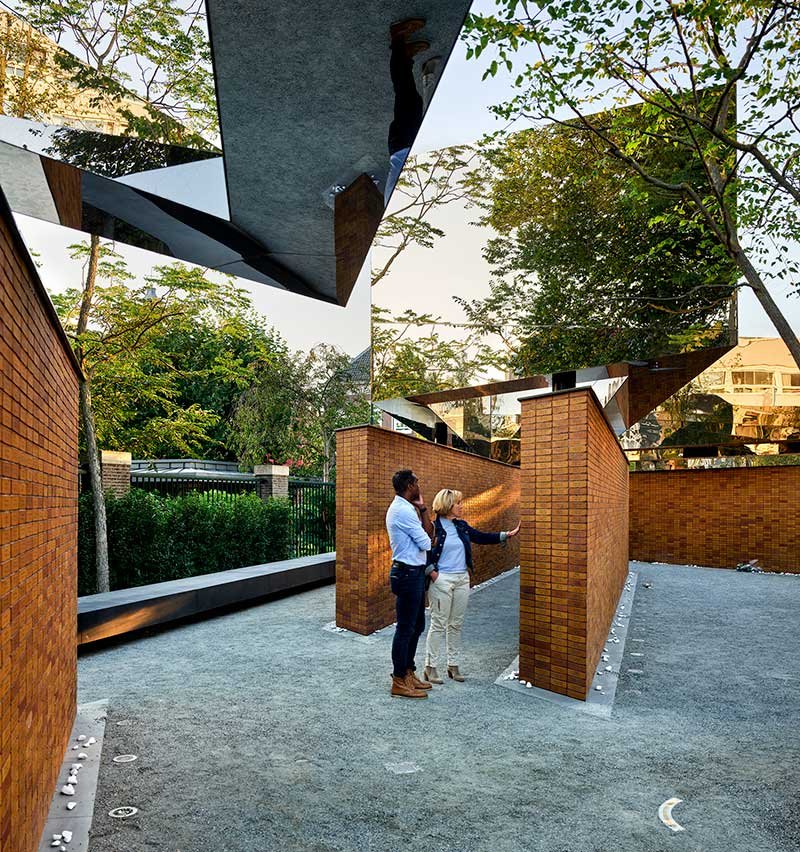
▼ Detail: Names Of The Victims Are Engraved On Brick Walls
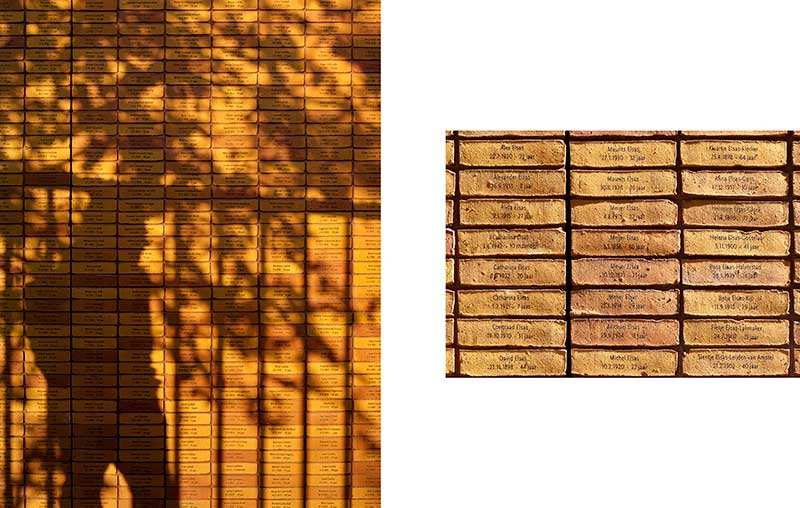
At street level, the floors around the walls are of a light stabilized gravel, creating a path through the four volumes. Simple stone blocks are placed in open spaces and walkways to provide a resting place for contemplation and reflection.
▼ Internal Path
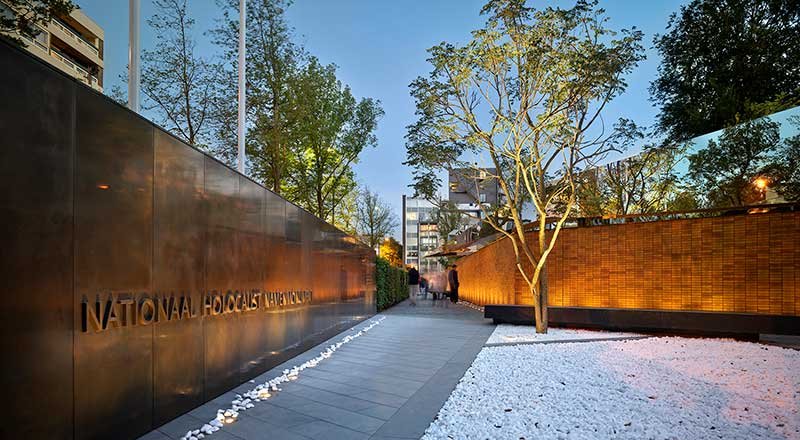
▼ Site Visit
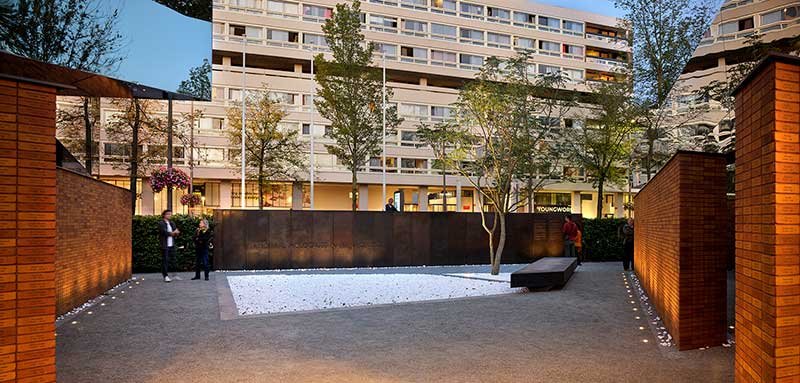

Situated next to a subway station to the north and a roadway to the east, the floating polished steel volumes will be visible to commuters during all hours. Light and reflection (self-reflection as well as reflection from the street and the city that surrounds it are necessary for a meaningful understanding of the tragedy of the Holocaust and the lives lost.
▼ Reflection Of Stainless Steel Volumes

▼ Model

